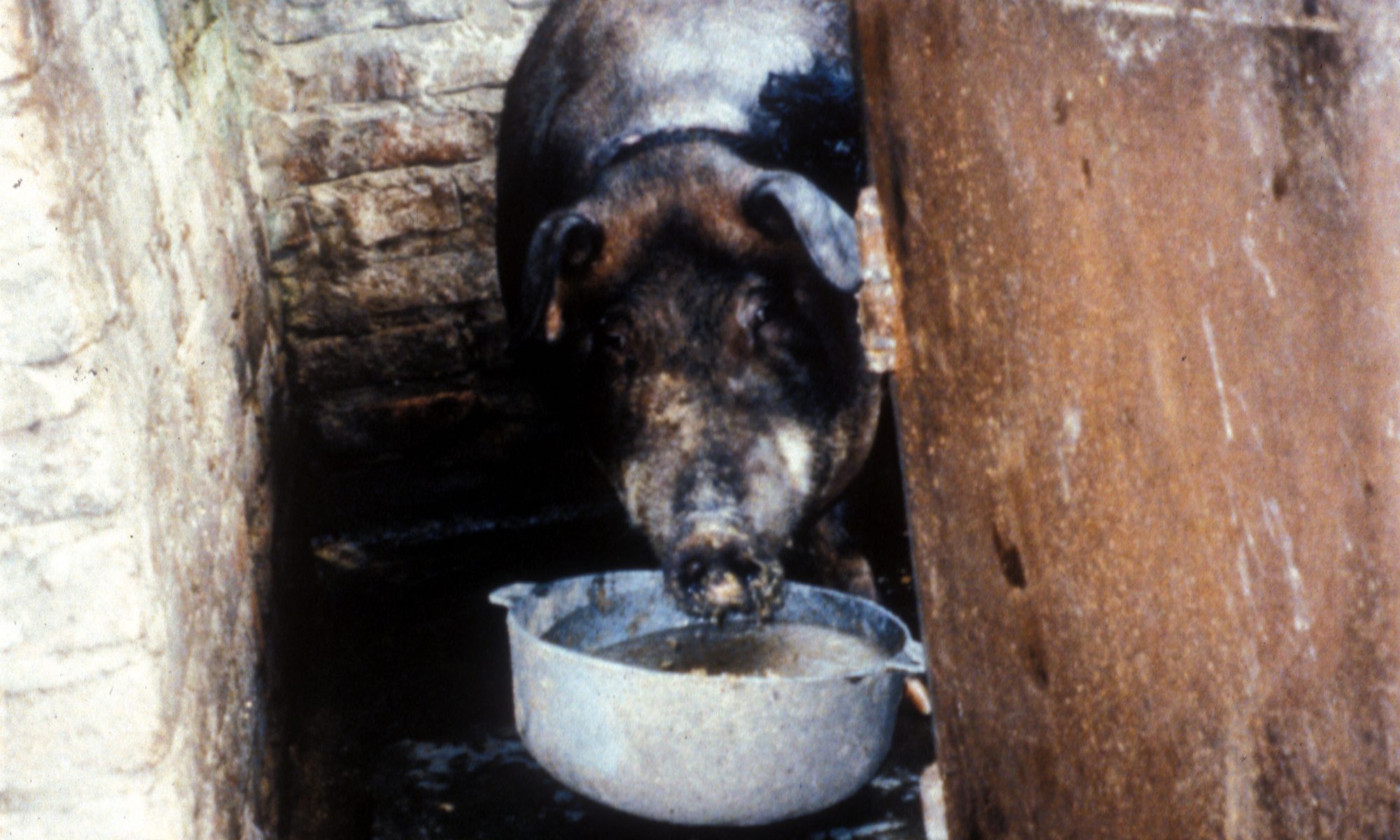Like most cities, Havana’s municipal government had prohibited the raising of livestock within city limits for decades at the time of the Cuban Revolution of 1959. However, in the Special Period, the despair of citizens over the unavailability of virtually all food in urban areas except for age-old beans, sugar and poor-quality rice led government officials to approve the raising of pigs in previously unthinkable places. Bathtubs inside apartments and rooftop “cells” became favored spaces for raising a pig. The goal, of course, was to “sacrifice” (as Cuban peasants say) the pig at a holiday or special event and save its lard for daily cooking, sometimes for as long as a year. Without vegetable oil or olive oil to buy, varying the diet of boiled eggs was impossible and making a sofrito to flavor beans, however modest, from garlic, onions, peppers and (ideally) cumin, was unthinkable. For members of my family who had always raised and “sacrificed” pigs, conditions like good treatment, space to roam and delectable foods like palm nuts were points of pride. They had relationships with their animals. Although most meat and protein besides soy and eggs were still expensive and unavailable on the state ration by the early 2000s, the practice of raising urban pigs largely disappeared, to the relief of most urbanites. Still the memory of how people peasants would consider unqualified to kill and eat pigs remains. Everyone remembers the squeal: inexperience often provoked great suffering. Although vegetarians and vegans may not understand, for island Cubans who rarely ate meat but rarely have many vegetables to eat, hunger not privilege ruled the nature of diets. Roof of home in Centro Habana, June 1995.
